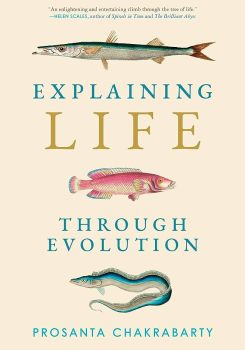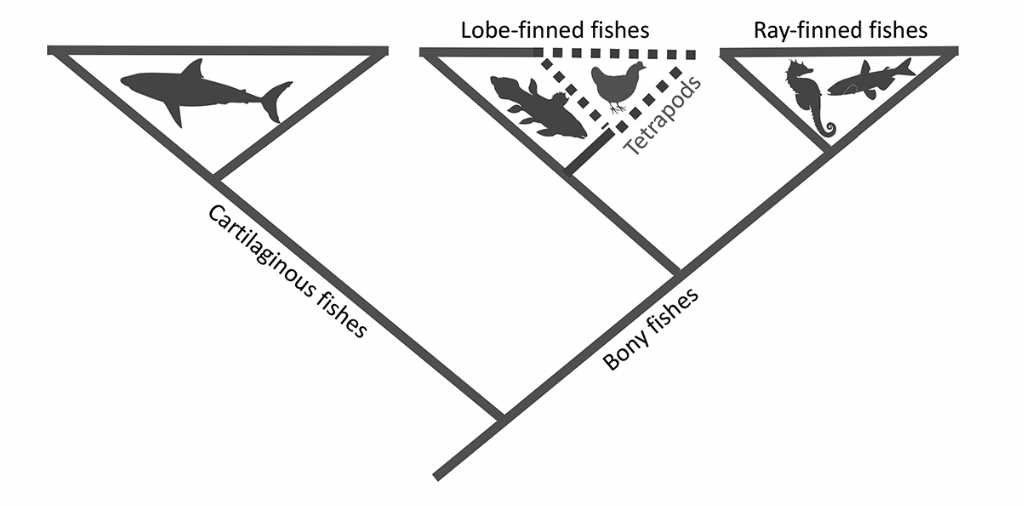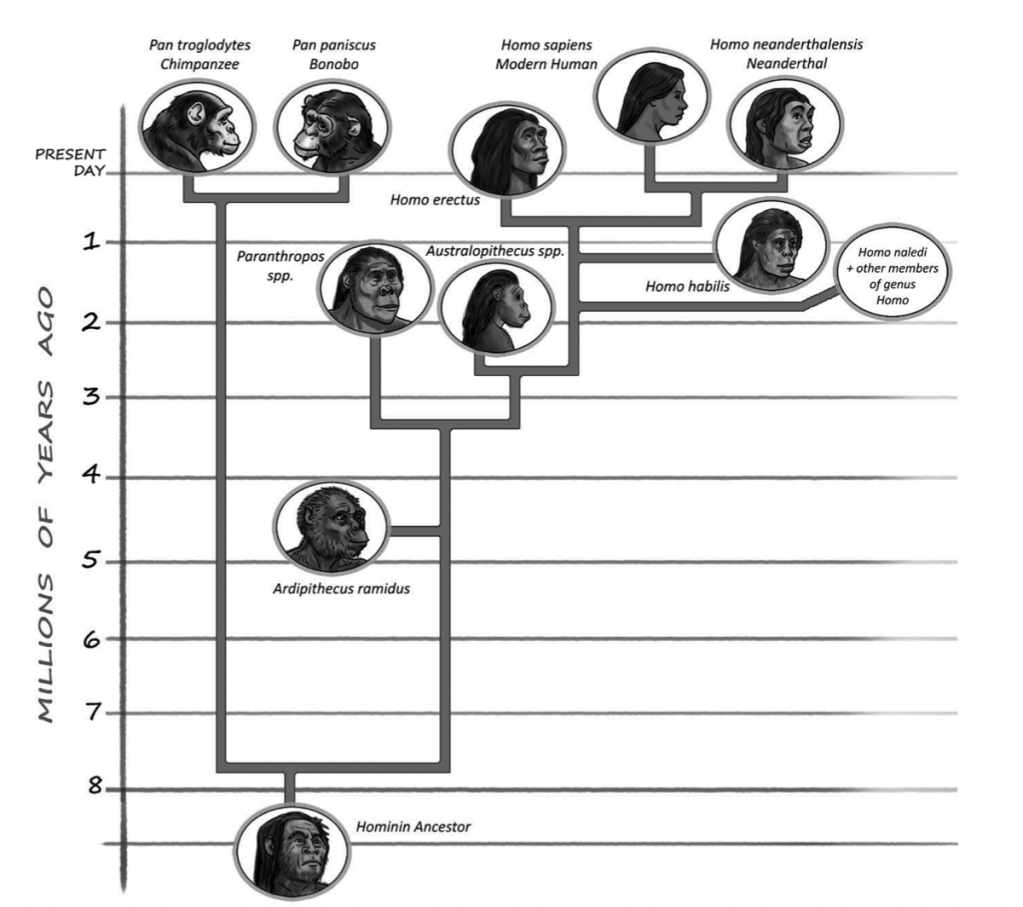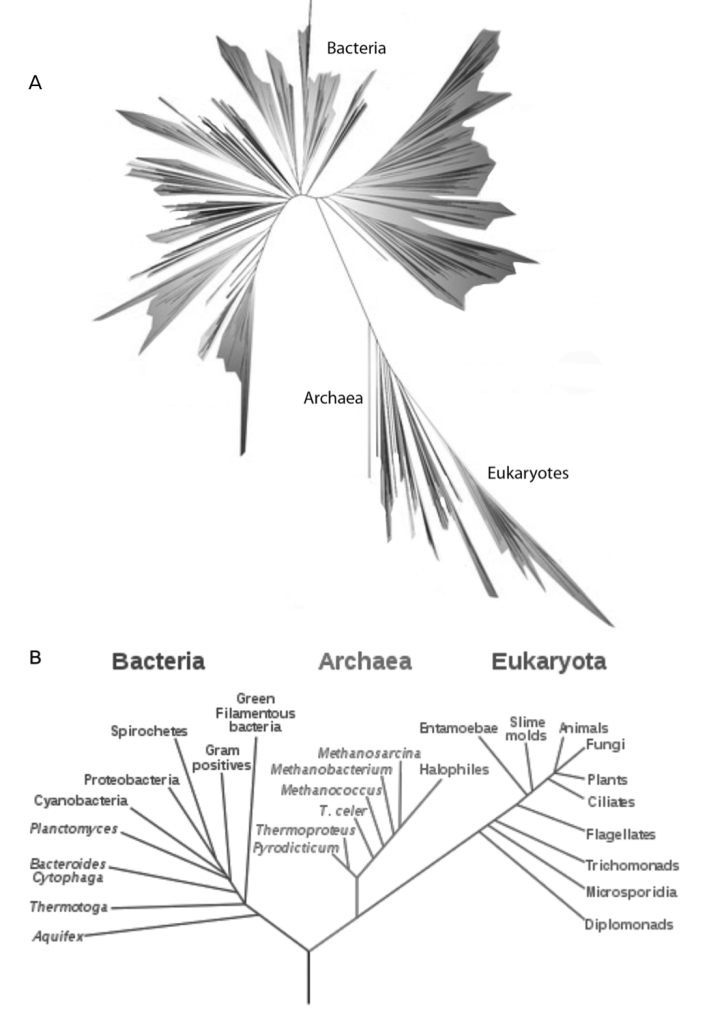Evolution: The Roots Of Our ‘Tree Of Life’
Author Prosanta Chakrabarty leads us through the basics of evolutionary change, and explains how evolution doesn’t mean “perfection.”
The following is an excerpt from Explaining Life through Evolution, by Prosanta Chakrabarty. The paperback book is available for purchase starting August 8!
Disclaimer: When you purchase products through the Bookshop.org link on this page, Science Friday may earn a small commission which helps support our journalism.

Explaining Life Through Evolution by Prosanta Chakrabarty
Look at your hand.
Why do you have five fingers?
Why not ten, or twenty, or one?
Why do so many animals have five fingers? Five seems to be the perfect number for most hands. Oddly, the first vertebrates to come onto land had many more fingers—seven or eight. These earliest land vertebrates were fish crawling out to land, at first just briefly, then steadily, progressively, for longer periods of time. As the descendants of that lineage became permanently established on land, the number of fingers decreased to five or fewer and stayed that way.
How about hair? Ever wonder why it is where it is on our bodies? Or why we have hair at all? Well, first off, we’re mammals—each with a belly button and a love of dairy and our mothers (well, most of us at least). But we’re different from other mammals. Why do we stand upright?
Sure, a kangaroo is a mammal that stands upright, but it has a nice thick tail to balance on, and we don’t. “What about a bird, like an ostrich?” you ask. They have beautifully and efficiently fused bones, like the tarsometatarsus between their ankles and their feet, for strength and stability, while we putter around with thirty-three joints in our feet along with about a fourth of all the bones in our body. What were we thinking? Becoming bipedal doesn’t seem to have been such a good idea. Doesn’t your back, neck, and feet hurt after you’ve been standing around for a while? Why are our backs curved worse than a busted fender on a rally car, instead of being straight, like a rod? And why do we have to balance our giant heads on top of our curvy spines—seems like a bad idea. Being warm-blooded comes in handy when it’s cold, but it makes us need to eat all the time. I bet you’re hungry right now, unlike that cold-blooded python chilling for months without having to snack. And nipples on males—what’s up with that? Evolution, that’s what’s up.
Indeed, that’s the thing about evolution: you don’t get to start from scratch each time, redesigning the body for each new model (species). You must build on what came before. And so sometimes you have to take a nice straight, loosely connected fish spine and stick it together and prop it up with a few extra twists and turns.
Every time I look at the human body, especially my own (and especially when sitting nearly naked waiting in the doctor’s office), I think of the ways I would fix it. I think of our aquatic ancestors, the animals that first developed a vertebral column (your “spine”), lungs, fingers, a big, compartmentalized brain and heart, and so on. I think of how much more comfortable we would be in the water, not fighting against gravity, just floating like a happy little sea turtle beneath the waves. So many of our body parts first evolved for use in water. I think of the gill structures we had, that you can still see in a developing human fetus, that transform into your voice box (“larynx”) and jaws and into the little bones that allow you to hear. I think of the muscles that help lift the gills in a shark being the same ones that are the muscles of your neck and upper back.
We didn’t get our muscles from sharks, nor did we evolve from sharks, but we do share a common aquatic ancestor a long, long time ago before bony and cartilaginous animals diverged. We had a more recent ancestor that was a bony fish, making all of its descendants, like us, technically bony fishes, too. All of us bony fishes—trout, seahorses, donkeys, and humans—are more closely related to one another than any of us are to sharks. Cartilaginous fishes and bony fishes have been evolving independently for a long time (although newly discovered fossil evidence suggests cartilaginous fishes may just be bony fishes that lost bone), but cartilaginous fishes remained relatively stable in their body types (mostly “shark-like” or flattened, as in the skates and rays) than members of the bony fish lineage. Some members of that bony fish lineage stayed in the water and continue to evolve to this day (as part of the over 35,000 species of bony fishes living); others left the water and gave rise to all of the land vertebrates or “tetrapods,” of which there are also about 35,000 species (figure 2). I sometimes wonder what it would have been like if cartilaginous fishes had invaded land, too. Just think about it—land sharks! But perhaps the cartilaginous skeleton of a shark isn’t strong enough to withstand the force of gravity for long (imagine standing on your floppy cartilaginous ears), even though sharks do have more than twice as much muscle as we do (some 75% versus only about 30% for humans).

If our aquatic ancestors didn’t have strong bony skeletons (and other organ and sensory systems adapted to survive in shallow waters), they wouldn’t have been able to invade land, and we wouldn’t be here. Sometimes people refer to certain animals, especially humans, as “perfectly designed,” but our aquatic ancestors had to twist and stretch and rework what they already had. You can’t get to the perfect solution for being a land animal from that fishy starting point (as those of us who have ever had backaches or had food stuck down our throats can confirm).
We share a common ancestor with all life on Earth, but we share common ancestors with some lineages of the Tree of Life much more recently than the 400-million-year-old fish that first came onto land. For instance, the common ancestor between us and our closest living relatives, the chimpanzees, lived only about 6–8 million years ago (figure 3). But chimps are only our closest living relatives; there were other, more closely related species that lived even more recently but that went extinct, some even less than 50,000 years ago.

But what if there were other human species besides Homo sapiens living today—Homo neanderthalensis, Australopithecus africanus, and Homo habilis, for example? How would their presence shape our view of humanity? I’d like to think that it would open our eyes to our shared similarities and help us fill the gap between humans and other animals. But in reality, I’m guessing we would focus on our differences. Let’s face it—if there were many more human species walking around today, sadly there’d also be many more flavors of discrimination.
Our species isn’t exactly known for its tolerance, and maybe that’s part of why so many people reject evolution—it puts us too close to the animals, it makes us an ape. Incidentally, all the other living apes besides us—chimps, gorillas, orangutans, and gibbons—are endangered because of us (whether through hunting, or habitat destruction). Maybe that same intolerance is why those other now-extinct human species disappeared about the same time Homo sapiens showed up. But who knows, if we blurred the line between us and the rest of the animal kingdom, maybe we would see ourselves for what we are—just another recently evolved branch of the Tree of Life.
As an evolutionary biologist, I like to explain as much as I can through the gaze of history and ancestor-descendant relationships. As the saying goes, “Nothing in biology makes sense except in the light of evolution”—an apt but now hackneyed pronouncement of the eminent geneticist Theodosius Dobzhansky, one that evolutionary biologists have heard all too often. But no matter how clichéd Dobzhansky’s words have become, they still ring true.
You just can’t explain life on Earth without seeing the connections between living things, connections we represent as the Tree of Life (figures 4A and 4B). One living thing giving rise to another, pass- ing along traits like those five fingers. Sometimes those five fingers become a bat’s wing and sometimes a walrus’s flipper. The origins are the same, evidence of our common ancestry. But evolution is also the things that don’t make sense: our bad backs, our strange knee joints, nipples on males. You’ve got to take the bad with the good, and you can only explain it through the change from one living thing to another. Evolution doesn’t make things perfect; it doesn’t do anything to direct any individual or group toward some goal. If, as a living thing, you are fit and lucky enough to survive long enough to pass on your genes to your children, then you are a direct part of the evolutionary process. But even though evolution can be quite cruel (Darwin may have lost his religious faith over the excessive role of competition and death in natural selection), it is not directed: it works without intent or vision toward the future. To quote another eminent biologist, François Jacob, “Evolution is a tinkerer, not an engineer.”

Incidentally, not reproducing doesn’t mean you’re not involved in the evolutionary process. Non-reproductive members of a population are indirectly involved in evolution: they aid it by helping reproductive members and their offspring survive. Consider, for example, the doting cousins with no children of their own, the sterile worker bees, and so on. They are all helping to pass along the genes that they share with individuals who are reproducing. In many cases they are passing along more of their own genes through that reproductively successful relative and the surviving offspring than if they had children themselves.
The products of the process of evolution are the survivors we see living today, modified bits and pieces that we can trace back from one ancestor to another. The evidence is in the genetic code (DNA and RNA) we all share, in the flesh and bones and behavior we can see and in fossils spanning nearly four billion years of change.
Excerpted from Explaining Life through Evolution © 2023 by Prosanta Chakrabarty. Reprinted with permission of MIT Press.
Dr. Prosanta Chakrabarty is the author of Explaining Life Through Evolution, and Curator of Fishes at Louisiana State University in Baton Rouge, Louisiana.